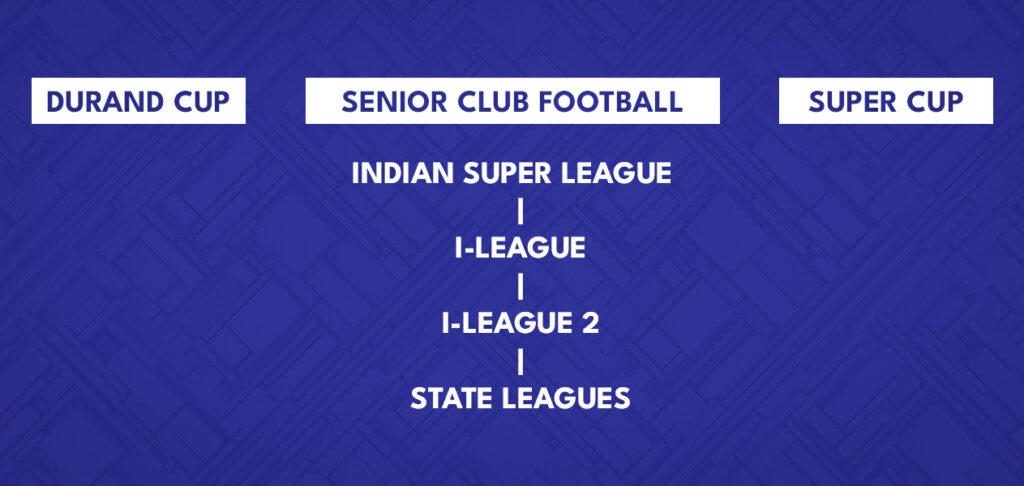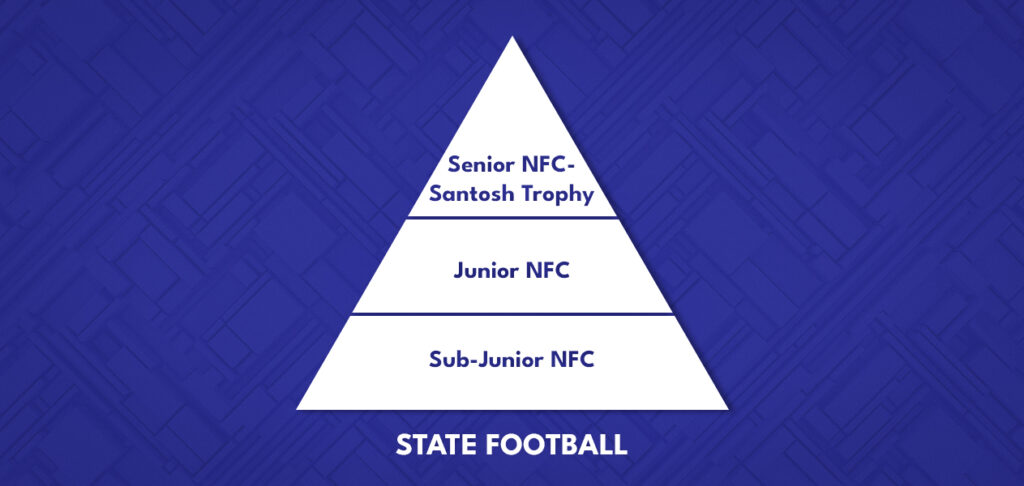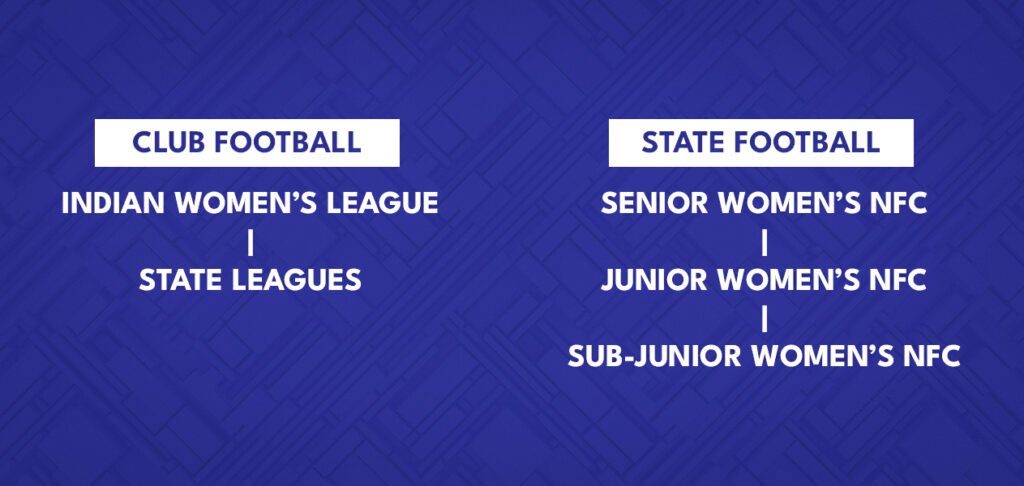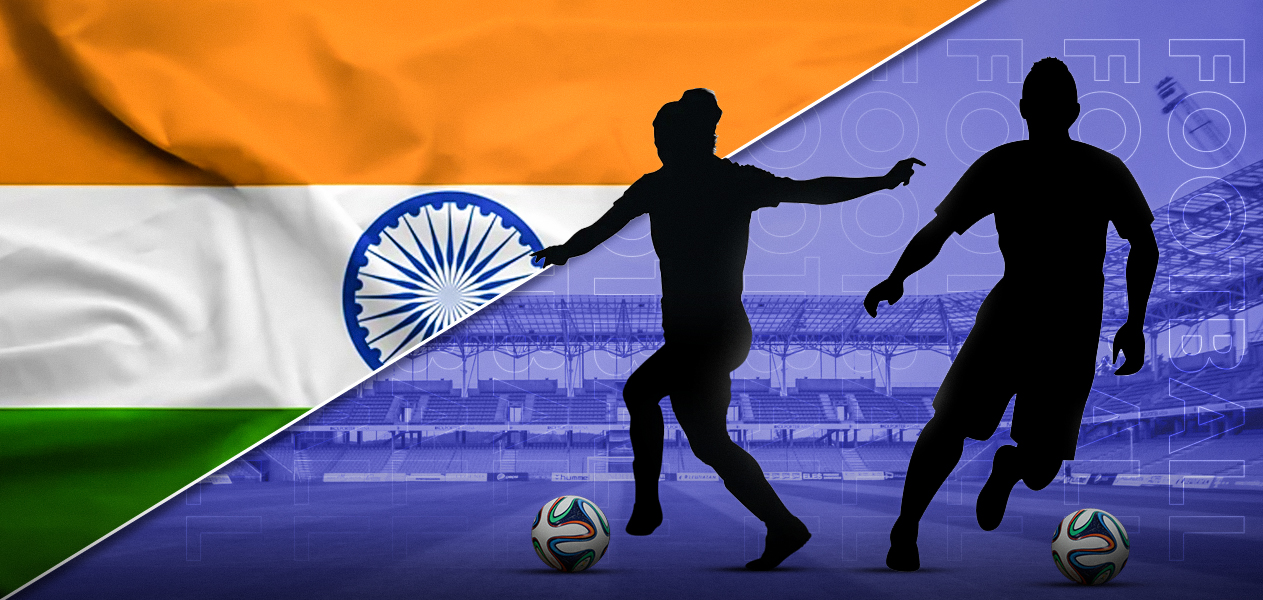The structure of men’s and women’s football in India
After years of dilly-dallying, the pathway to the top echelons of Indian men’s football is looking clearer to all the clubs in the country.
A few weeks ago, the All India Football Federation (AIFF) announced that the roadmap for Indian football, as approved by the Asian Football Confederation (AFC) in October 2019, will be implemented from next season onwards.
According to the same, the winners of the I-League seasons 2022-23 and 2023-24 will be able to enter the Indian Super League (ISL) on merit and without any participation fee if they are able to fulfil the club licensing criteria. It is unclear what happens, however, in case the clubs are unable to fulfil the licensing criteria.
For Indian women’s football, the Indian Women’s League (IWL) remains the top division in club football, with a few more state leagues in the system.
So, what does the current structure of Indian football look like?
MEN’S FOOTBALL
For long, the ISL and the I-League were standalone properties—parallel stumps—but that is now a thing of the past. The other clubs in the system may finally have a bigger role to play and a much more defined place in the newer structure.
The ISL is the top-tier club league in the country, with I-League being the de facto second division. The I-League 2 takes its place as the designated third division.
With the doors of merit-based promotion opening into the ISL, the I-League clubs will now have a chance to win and advance to the top tier. Currently, the ISL has 11 teams, while 12 teams are participating in the I-League.
Apart from these two leagues, there is the I-League 2 and the state leagues. The I-League 2 was held in a knockout format in 2021 due to the COVID-19 pandemic but is expected to take place around January next year in a more elaborate home-and-away format. Whether the finances of these clubs allow for the additional travel and logistical costs remains a big question mark.
Previously, state FAs would nominate two teams from the top half of their state leagues. A recent diktat to the states ensures that the winners of a state league are eligible to play if interested and if nominated by the state FA. Nomination to the I-League 2 is another contentious point which has not been cleared over the years.
The Super Cup tournament will also take place after the end of the ISL season next year. This tournament was discontinued due to the COVID pandemic and is a rebranding of the Federation Cup that was played earlier.
The Durand Cup is the other main tournament played by the men. This year, all ISL teams, along with a few I-League and I-League 2 teams, were invited. The plan is to expand this tournament to include more teams, so that this pre-season exhibition can act as a good launching pad for teams to try out their players. Also, the lure of winning the world’s third-oldest tournament is a mouth-watering prospect in and of itself.
The above-mentioned leagues and tournaments are all a part of senior club football. For different age groups, there is the Santosh Trophy (school), the AIFF Elite League, the Junior and Sub-junior Leagues (last took place in 2020), and the Baby Leagues.
The AIFF does not classify the three youth leagues according to age criteria, instead using a TW3 (Tanner-Whitehouse Test) method of age verification as the qualification standard. The standards last used were 18.2 for Elite, 16.2 for Junior, and 14.2 for Sub-junior.
Coming to the national level, there are state tournaments like the Senior National Football Championships (took place earlier this year) and the Junior and Sub-junior National Football Championships, which last took place in 2020 and 2019, respectively.
Senior Club Football

Age-group Football

State Football

WOMEN’S FOOTBALL
At the top of the women’s football pyramid in India sits the IWL, which began in the 2016-17 season. Prior to the IWL, there was only the Senior Women’s National Football Championship, which is a tournament played among the state teams.
The previous season of the IWL had 12 teams playing at a central and pre-decided location, which in this case was Bhubaneswar, Odisha. The upcoming season is expected to have 18 teams.
The teams qualify for the IWL on the basis of qualification from their respective state leagues. Until last season, the AIFF would also organise the IWL qualifiers prior to the start of the league for the teams that did not have a state league.
From this season onwards, there will be no IWL qualifiers, and all the states will be required to organise a league for qualification. A state league should at least be ten-match long with six teams involved at the minimum.
Apart from these two entities in senior football, the Senior Women’s NFC continues to be held, where state teams and Railways participate.
In age-group women’s football, there is the Santosh Trophy for schools and the Junior and Sub-junior NFCs. A few states also have mixed tournaments for ages under 12.
The Khelo India U-17 League became the first youth league for women in the country. States organise their own U17 leagues before the winners qualify for the final tournament.

As more investment comes into Indian football, the structure will have to evolve with it, but it is of utmost importance that all stakeholders feel they have a chance to reach the top and for the players to develop using the most crucial tool: game time.

